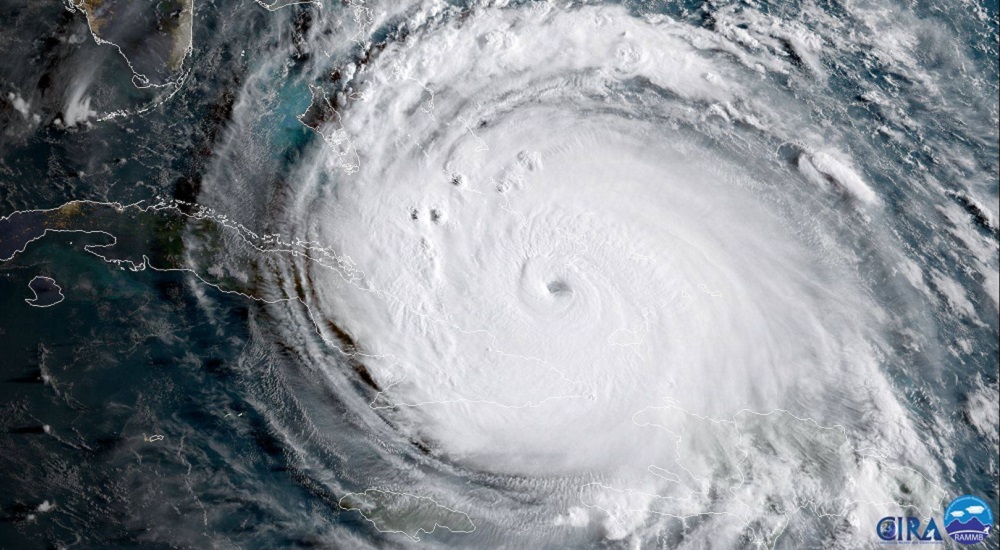Editor’s note: This blog post was originally published on June 8, 2018. In light of new storms that pose a threat to the Gulf Coast region, here are some Hurricane tips that can keep you and your family safe.
FEMA recently added a Veterans resource page to its Disaster Assistance website. www.disasterassistance.gov/information/veterans allows all Veterans who have been impacted by a disaster to find information on how to get assistance in an efficient and timely manner.
Are You Ready for Hurricane Season?
Hurricane Season is June 1 – Nov. 30. Never underestimate the value of being prepared! Check out the information below to learn more about hurricanes, hazards associated with hurricanes and what you can do to prepare.
The National Hurricane Center (NHC) maintains a continuous watch on tropical cyclones over the Atlantic, Caribbean, Gulf of Mexico and the Eastern Pacific from May 15 through Nov. 30. Learn more about the NHC
- WATCH A hurricane watch is issued for a specified coastal area for which a hurricane or a hurricane-related hazard is a possible threat within 48 hours.
- WARNING A hurricane warning is issued when a hurricane with sustained winds of 74 mph or higher is expected in a specified coastal area in 36 hours or less. A hurricane warning can remain in effect when dangerously high water or a combination of dangerously high water and exceptionally high waves continues, even though the winds may have subsided below hurricane intensity.
The calm before the storm: Develop your family disaster plan now
The best time to make important decisions about your family’s safety is before disaster strikes. Past events have shown that people who think ahead, prepare and have a plan fare best during and after a disaster. If a disaster occurs in your community, local government and disaster relief organizations will try to help you, but you need to be prepared to be self-sufficient for at least 72 hours (3 days).
Elements of a good family disaster plan include:
- Locating a safe room or the safest areas in your home for each hurricane hazard. In certain circumstances the safest areas may not be your home but within your community.
- Determining escape routes from your home and places to meet. These should be measured in tens of miles rather than hundreds of miles.
- Having an out-of-state friend as a family contact, so all your family members have a single point of contact.
- Making a plan now for what to do with your pets if you need to evacuate.
- Posting emergency telephone numbers by your phones and make sure your children know how and when to call 911.
- Checking your insurance coverage – flood damage is not usually covered by homeowners insurance.
- Stocking non-perishable emergency supplies and a Disaster Supply Kit.
- Using a NOAA weather radio. Remember to replace its battery every 6 months, as you do with your smoke detectors.
- Taking First Aid, CPR and disaster preparedness classes.
Here are some important links:
Don’t get caught up a creek without a paddle
Don’t let long lines at the local hardware store, grocery store and gas station get you down…
Don’t rely on local relief organizations to provide you food or water during the first few days following a hurricane…
You should have enough supplies in your home to meet the needs of you and your family (don’t forget your pets) for at least three days – 5-7 days may be better.
Preparing for emergencies don’t have to be expensive if you think ahead and buy small quantities at a time.
Make a list of foods that:
- Have a long shelf-life and are non-perishable
- You and your family like
- Don’t require cooking
- Can be easily stored
Hurricane Family Survival Kit
Being prepared before an emergency happens can make a big difference in how you and your family weather the storm.
Items you should consider for your Family Survival Kit include:
- Water – 3 gallons per day per person
- Battery Operated Radio
- Bleach
- Candles and matches or lighter
- Duct Tape
- Emergency cooking supplies
- Extra batteries
- Extension cores – heavy duty
- Blankets/Pillows
- Rain Gear and sturdy shoes
- Pet food
- Extra medications
- Fire extinguisher
- First Aid kit
- Toys, books, games
- Flashlight with extra batteries and bulbs
- Toiletries
- Manual can opener
- Pet care items
- Ready to eat canned and prepared food
- Valuable papers
- Valid drivers’ license
- Cash
Don’t Leave Your Pet Stranded…Have a Pet Plan
Your pet may be your best friend, but due to health regulations, most emergency shelters cannot house animals.
Find out in advance how to care for your pets and working animals when disaster strikes. Pets should not be left behind…check with your veterinarian, a friend or your local animal shelter about options should you have to leave your home. Be sure to take food and water for your pets.
For more information, visit the American Red Cross Animal Safety page:
Make a Connection
Choose an emergency contact person OUTSIDE your area…
It may be easier to call long distance than locally after a local or regional disaster. Also remember, that following a major disaster, traditional phone service or cell service may be out. Make sure you have multiple means of getting in touch with your emergency contact person.
Take a minute now to call or email an out-of-town friend or family member to ask them to be your family’s designated contact in the event of an emergency.
Be sure to share the contact information with everyone in your family. Complete an emergency contact card and make sure all members in your family carry it with them.
During an emergency, you can call your contact person who can share with other family members where you are; how you are doing; and how to get in contact with you. If you are unable to make contact with your family, the American Red Cross maintains a database to help you find missing family members.
Water, Water Anywhere?
Keep at least a three-day supply of water per person. Store a minimum of one gallon of water per person per day (two quarts for drinking, two quarts for food preparation and sanitation).
Store water in plastic containers such as large soft drink bottles. Avoid using containers that will decompose or break, such as milk cartons or glass bottles.
A normally active person needs to drink at least two quarts of water each day. Hot environments and strenuous activity can double that amount.
Children, nursing mothers and people who are sick will also need more.
Mary Kay Rutan is the communication manager for the VA Sunshine Healthcare Network.
Topics in this story
More Stories
Secretary Doug Collins announces VA’s shift to in-person work, ensuring a smooth transition while prioritizing service to Veterans.
Secretary Collins touts accomplishments in Trump’s first 30 days, including eliminating DEI, revising the flag policy, and reallocating over $100 million.
VA Secretary Doug Collins released a video from his office today addressing misinformation circulating about Veterans' benefits and VA health care.







Thank God that Barry’s heaviest rainfall ended up far away from land. The fact that Barry ended up being weaker than expected was a relief for us.
We have frequent power outages during summer storms and can last 1-3 days before power is restored. I am the caregiver of a complete disabled veteran who lives at my residence for over 20yrs. It can get quite hot with no power for air condition to cool. I was thinking of a portable generator of at least 10,000 Watts to run 2 portable mobile room ac units and the basic lighting as well. He is under va fiduciary who handles his affairs. Should I ask for some assistance from his fiduciary to help with some of the cost. 50/50 I assume.